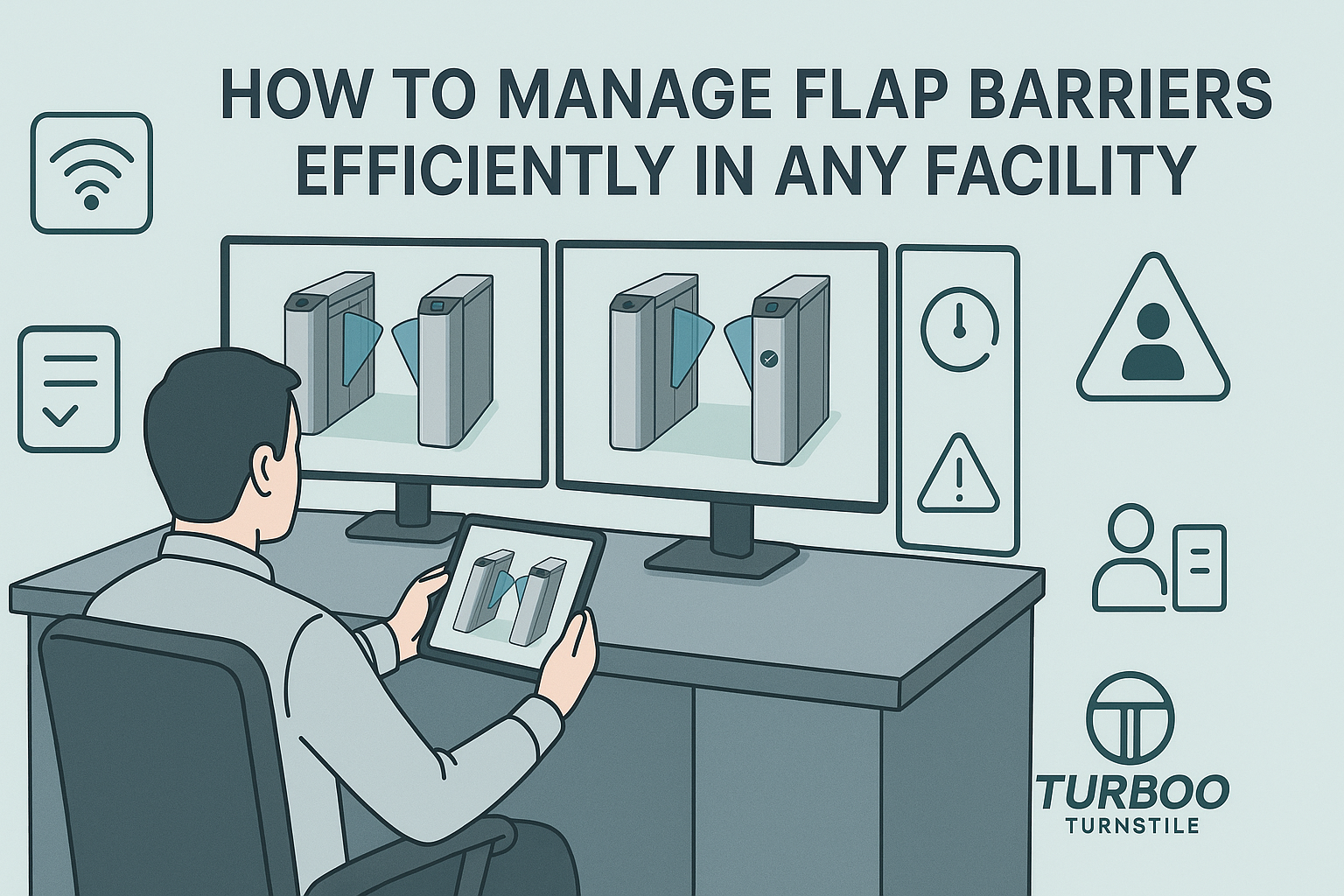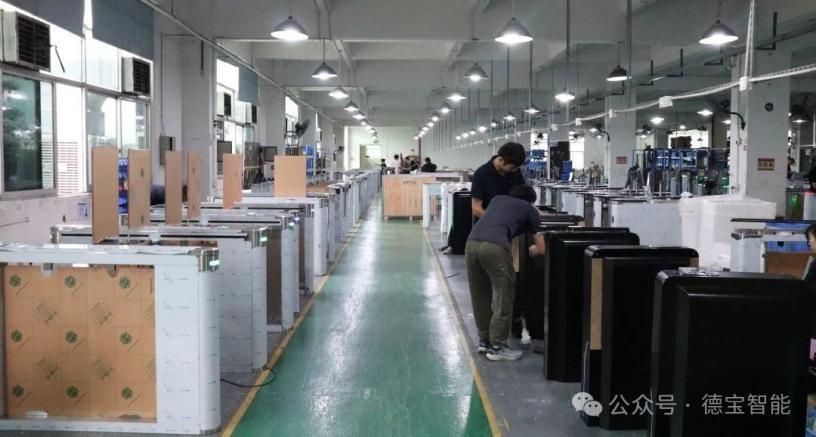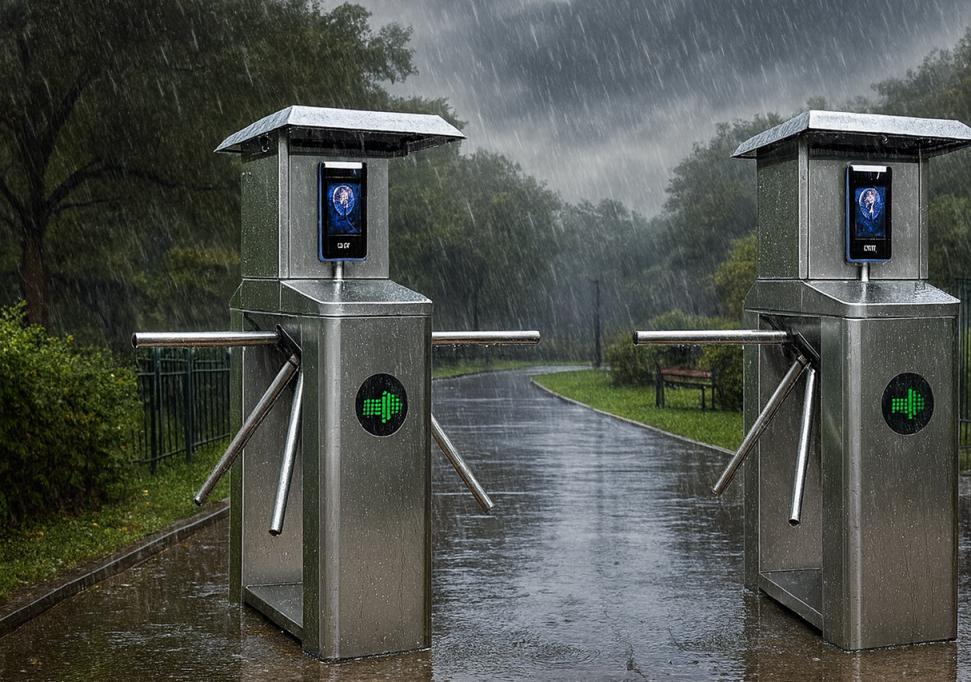How to Manage Flap Barriers Efficiently in Any Facility


Flap barriers are essential components of access control systems, providing a secure and efficient method for managing the flow of people through entry points. However, managing these systems efficiently can be a challenge for facility managers, security teams, and operations personnel. From dealing with unexpected downtime and user complaints to managing complex system setups, the responsibility of ensuring smooth operations often falls squarely on the shoulders of the management team.
Effective flap barrier management is key to keeping your facility secure while maintaining a positive user experience. By focusing on the right management strategies and using the right tools, you can ensure that your flap barriers remain reliable, cost-effective, and operational at all times. In this article, we’ll explore the essential steps involved in managing flap barriers efficiently, from routine inspections to system optimization and integration with other security measures.
The Importance of Flap Barrier Management
Managing flap barriers goes beyond simply installing a system and hoping for the best. It involves ongoing, strategic oversight to ensure the system is always operating at peak efficiency. Whether you are overseeing a single barrier or a large network of turnstiles and access points, proper flap barrier management ensures that your facility remains secure, user-friendly, and cost-effective over time.
Effective management encompasses a broad range of activities, including routine inspections, preventive maintenance, performance monitoring, and system integration. By prioritizing these tasks, you can avoid unexpected system failures, reduce operational costs, and extend the life of your flap barrier systems. Consistency is key: regular checks and updates help keep the system running smoothly, minimizing downtime and enhancing security.
Routine Inspections: The Foundation of Effective Management
Routine inspections form the backbone of any effective flap barrier management strategy. Regular checks of the system help identify potential issues before they escalate into costly repairs or system downtime. Flap barriers are mechanical systems, and just like any machinery, they require periodic inspection to ensure their longevity and functionality.
Key inspection areas should include:
- Sensors: Ensure that the sensors are calibrated and functioning correctly to prevent malfunctions such as false positives or missed obstructions.
- Motors and Mechanisms: Inspect the moving parts to ensure smooth operation and lubrication. Over time, mechanical components can wear down, which may cause the barrier to become sluggish or unresponsive.
- Power Supply: Regularly check the power supply to avoid unexpected power failures that can disrupt operations. Ensure backup power systems are operational, especially in critical facilities.
- Structural Integrity: Visually inspect the barrier structure for any signs of damage, misalignment, or wear that could affect functionality.
By maintaining a consistent inspection schedule, you can prevent small issues from becoming major disruptions, keeping your flap barriers operating smoothly and reliably.
Preventive Maintenance: Ensuring Longevity and Efficiency
Preventive maintenance is crucial for extending the lifespan of your flap barriers and minimizing downtime. Rather than waiting for the system to fail, preventive maintenance involves taking proactive steps to ensure that the barrier functions optimally over time. This type of maintenance helps avoid larger, more expensive repairs and ensures the system remains in top working condition.
Preventive tasks typically include:
- Lubricating moving parts to reduce friction and wear.
- Replacing worn-out components such as motors, sensors, or batteries.
- Checking and updating software and firmware to ensure the barrier stays compatible with other systems.
By following a regular preventive maintenance schedule, you reduce the likelihood of unexpected failures and extend the life of your barrier system. Flap Barrier Maintenance is a key element of an effective long-term strategy, and scheduling regular maintenance will save you from costly replacements in the future.
Leveraging Software and Tools for Real-Time Monitoring
One of the most effective ways to manage flap barriers efficiently is by utilizing software tools that offer real-time monitoring and reporting. Flap barrier management software helps facility managers track the performance of the system, detect issues before they cause significant problems, and ensure that the barriers are functioning as intended.
Using these tools, you can:
- Monitor system performance in real-time to ensure that all barriers are operating smoothly.
- Generate reports that track operational data, such as throughput and user access patterns.
- Alert management teams about potential issues, such as sensor misalignments or software malfunctions.
- Perform remote troubleshooting to resolve minor issues without requiring an on-site technician.
Integrating these tools with your facility’s broader security system ensures that all systems are working in sync, improving overall facility management efficiency. Flap Barrier Tools play a vital role in keeping your flap barriers up to date and running smoothly.
System Integration: Seamlessly Connecting Flap Barriers to Other Security Systems
Flap barriers are most effective when integrated with other security systems, such as access control, CCTV surveillance, and alarm systems. Proper integration helps streamline facility operations, improve security, and reduce the likelihood of human error.
Key integration benefits include:
- Centralized control: Managing access across multiple entry points becomes more efficient when flap barriers are integrated into a single security system.
- Real-time data sharing: Barrier performance data can be shared across security platforms, improving threat detection and response times.
- Improved user experience: Integrated systems allow for smoother access control, as users can move seamlessly through multiple access points with minimal disruption.
Flap Barrier Integration is essential for ensuring that your flap barriers work in harmony with other security measures, providing a more secure and efficient facility.
User Access Control: Balancing Security and Convenience
Managing user access is a key component of flap barrier management. The goal is to balance security with user convenience, ensuring that authorized personnel can easily pass through while preventing unauthorized access.
To manage user access effectively:
- Regularly update access permissions based on changes in staffing, security protocols, or other factors.
- Ensure that access control systems (such as keycards or biometrics) are working correctly and integrated with the flap barrier system.
- Monitor user flow patterns to identify potential bottlenecks or areas where security may be compromised.
By ensuring that user access is tightly controlled, you improve both security and operational efficiency.
Performance Monitoring and Optimization
Flap barrier systems should not only be operational but also performing at optimal efficiency. Regular performance monitoring helps identify inefficiencies, bottlenecks, and potential issues that could affect throughput or security.
Performance monitoring involves:
- Analyzing throughput data to identify peak usage times and ensure that barriers are capable of handling high traffic volumes.
- Tracking system health indicators, such as motor usage or sensor performance, to identify when parts are approaching the end of their lifespan.
- Optimizing software settings to improve system responsiveness and functionality.
System Optimization strategies ensure that your flap barriers are always running at their best, improving both security and user experience.
Responding to Issues and Troubleshooting
No matter how well-managed a system is, technical issues will inevitably arise at some point. One of the most important aspects of flap barrier management is responding to these issues quickly and effectively to minimize downtime and disruptions. Proactive troubleshooting ensures that barriers remain operational even when minor problems occur.
Handling Unexpected Downtime or Failures
Common issues with flap barriers might include sensor failures, misalignment of the flaps, power outages, or software glitches. When any of these occur, it’s essential to have a process in place to troubleshoot and resolve the issue as quickly as possible.
Best practices for troubleshooting include:
- Performing remote diagnostics when possible to avoid unnecessary downtime. Many modern barrier systems allow for remote troubleshooting, enabling technicians to identify and resolve issues without visiting the site.
- Utilizing diagnostic tools built into the system to help pinpoint the cause of the problem. These tools can identify error codes, sensor failures, or communication issues with other security systems.
- Having an on-call technician or support team that can handle urgent issues efficiently, especially if the barrier is in a high-traffic or critical area.
By setting up clear troubleshooting protocols and ensuring that technical staff are trained to resolve common problems swiftly, you reduce the likelihood of prolonged downtime and improve the overall reliability of the flap barrier system.
Coordination with Broader Facility Systems
Flap barriers do not operate in isolation—they are part of a larger security and facility management system. Effective flap barrier management involves coordinating with other departments and systems to ensure seamless operation.
For example:
- IT department: Flap barriers often rely on software for configuration, monitoring, and updates. Regular collaboration with your IT team ensures that the software is compatible with existing infrastructure and up to date with the latest security patches.
- Security teams: The security team will often be the first line of defense if an access issue occurs or if there is a security breach. Ensuring that they are trained on how to operate the system and respond to alerts effectively is key.
- Operations staff: In high-traffic areas, managing user flow is vital for maintaining the efficiency of the flap barrier system. Operations staff should be informed about peak usage times, system status, and user flow patterns to ensure that barriers are functioning optimally during critical periods.
Effective coordination ensures that the flap barrier system complements the broader security and operational goals of the facility. This alignment enhances the system’s efficiency and reliability, allowing for smoother day-to-day operations.
Conclusion
Efficient flap barrier management is crucial for maintaining a secure, efficient, and reliable system in any facility. By focusing on daily inspections, preventive maintenance, and leveraging the right software tools for real-time monitoring, you can ensure that your barriers are always operational and providing optimal performance. Additionally, integrating flap barriers with other security systems enhances their effectiveness and allows for a streamlined approach to facility management.
By following best practices for troubleshooting, coordinating with other departments, and setting up clear management protocols, you can avoid downtime, reduce operational costs, and create a more secure and user-friendly environment. Proactive flap barrier management not only improves the longevity of the system but also contributes to smoother operations and better overall security.
Frequently Asked Questions (FAQs)
- How often should I inspect my flap barrier system?
Routine inspections should be conducted daily, with more in-depth checks performed weekly, monthly, and quarterly. This ensures that minor issues are addressed before they escalate. - What is the importance of system integration for flap barriers?
Integration with other security systems, such as access control and CCTV, improves the overall efficiency and effectiveness of the flap barrier system, streamlining security processes and providing real-time data. - Can I perform troubleshooting remotely?
Yes, many modern flap barrier systems come with built-in diagnostics that allow for remote troubleshooting, which can help minimize downtime and resolve issues quickly. - What are the most common issues with flap barriers?
Common issues include sensor malfunctions, motor failure, misalignment of the barrier, and power supply interruptions. Regular maintenance can prevent these issues from becoming major problems. - How do I balance security with user convenience in a flap barrier system?
Regularly updating access permissions and using automated access control systems that are integrated with the barrier system helps maintain security while providing a smooth user experience.












